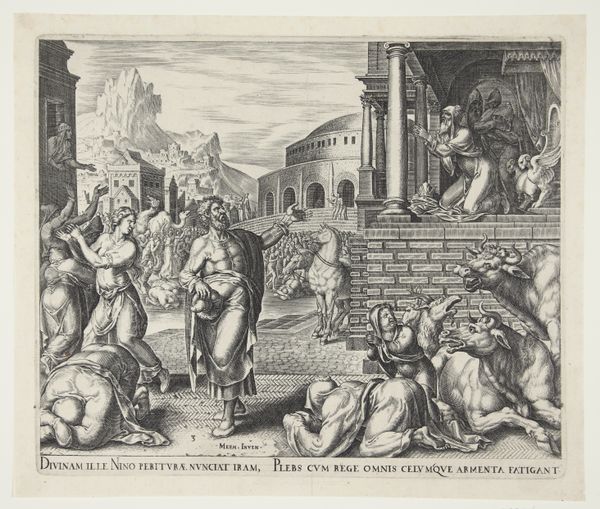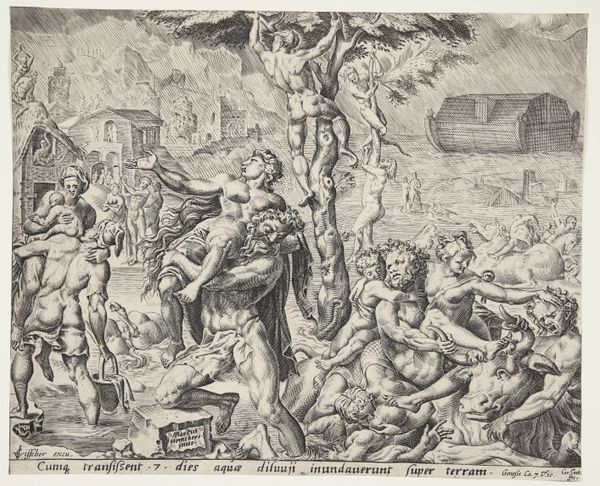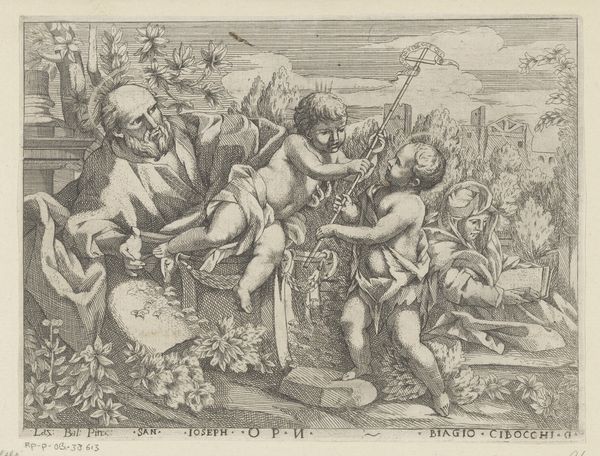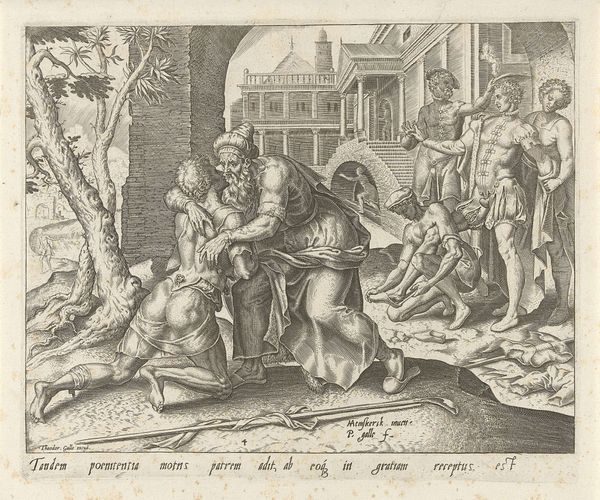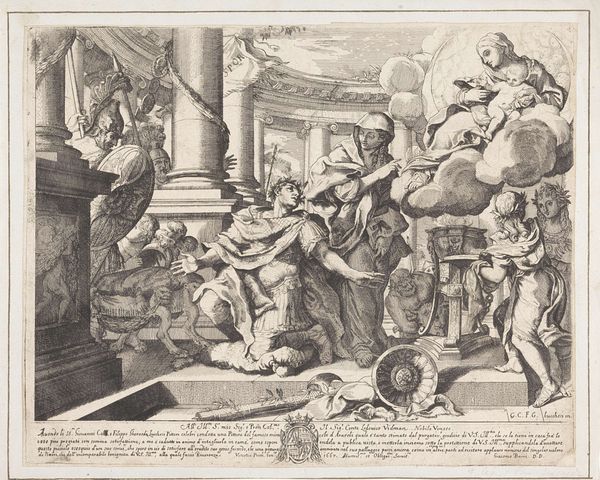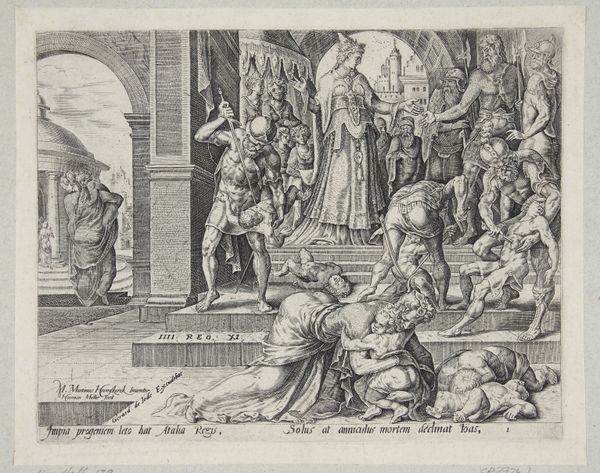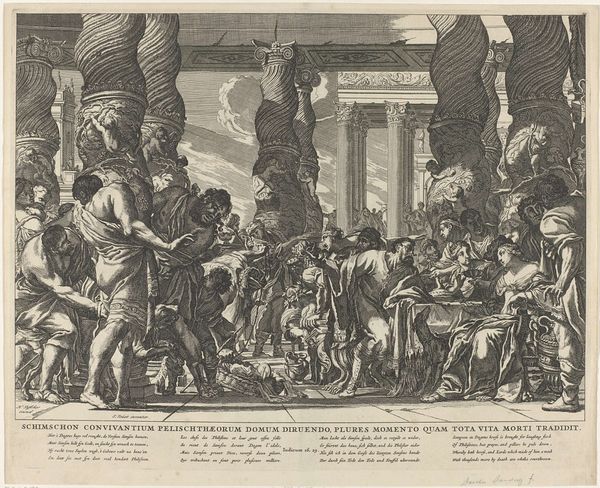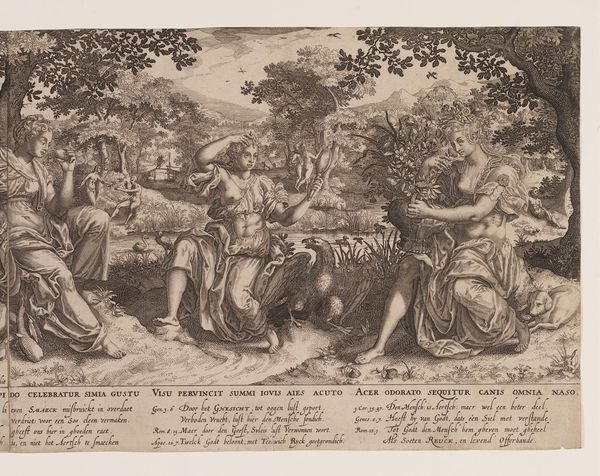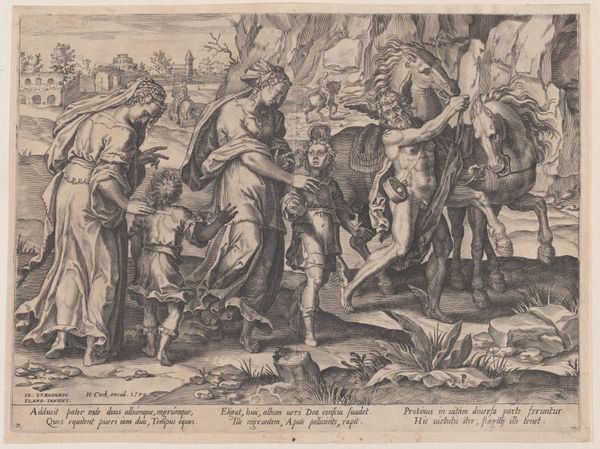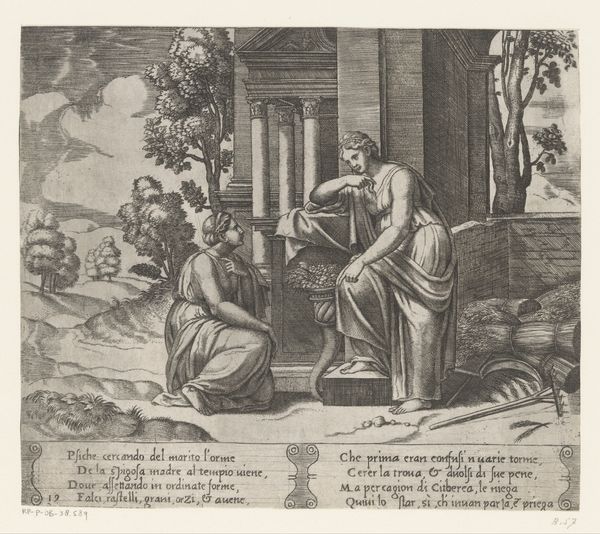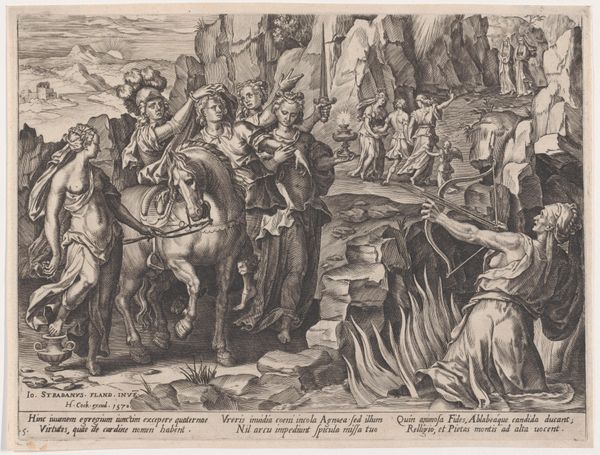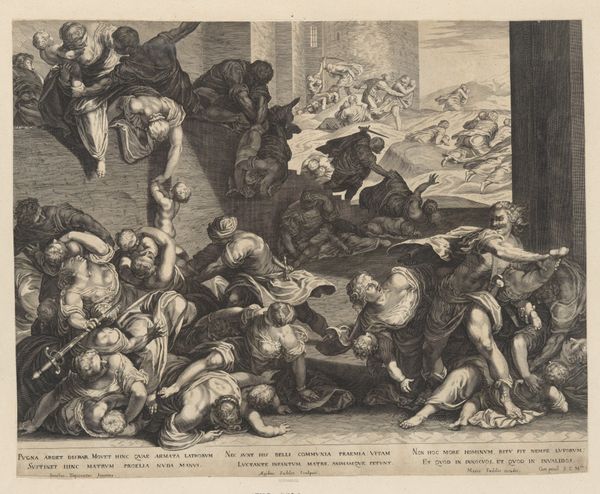
print, engraving
#
narrative-art
# print
#
old engraving style
#
landscape
#
figuration
#
history-painting
#
italian-renaissance
#
engraving
Dimensions: height 195 mm, width 227 mm
Copyright: Rijks Museum: Open Domain
Editor: This engraving, "Psyche meegevoerd door Zephyrus" by the Master of the Die, likely created between 1530 and 1560, depicts a classical scene. The contrast between light and dark creates an almost dreamlike quality. What strikes me is how the figures are staged in this landscape, what is your reading of it? Curator: I'm particularly interested in how an artwork like this reflects the socio-political landscape of its time. Here we see the Italian Renaissance fascination with classical mythology, reflecting a humanist revival of classical learning and artistic styles. Prints like these circulated widely. Were they used to propagate a specific world-view or ideal of feminine virtue for example? Did wealthy patrons have copies made, to promote their appreciation of the arts? The composition seems very staged; does that imply something? Editor: That’s a great point about circulation. Were these prints accessible to everyone, or were they primarily consumed by the elite? Curator: Generally speaking, the printing press revolutionized knowledge dissemination. While owning original art remained a privilege, prints like these broadened access to visual culture. However, access didn’t equal understanding; did social status, and formal education affect one's ability to decipher and appreciate this image of the story of Psyche and Zephyrus? What power does that bestow? Editor: So the artwork’s reception depends on the viewer’s background. Considering the political dynamics adds depth. I hadn’t thought of it that way! Curator: Exactly. Analyzing visual culture in conjunction with institutional and cultural frameworks gives us a richer appreciation for a work's multiple meanings. I still wonder to what end such narratives were created and propagated in print? Editor: I’ve gained so much from that historical and political perspective; I feel like I have a fuller understanding now. Thank you.
Comments
No comments
Be the first to comment and join the conversation on the ultimate creative platform.

